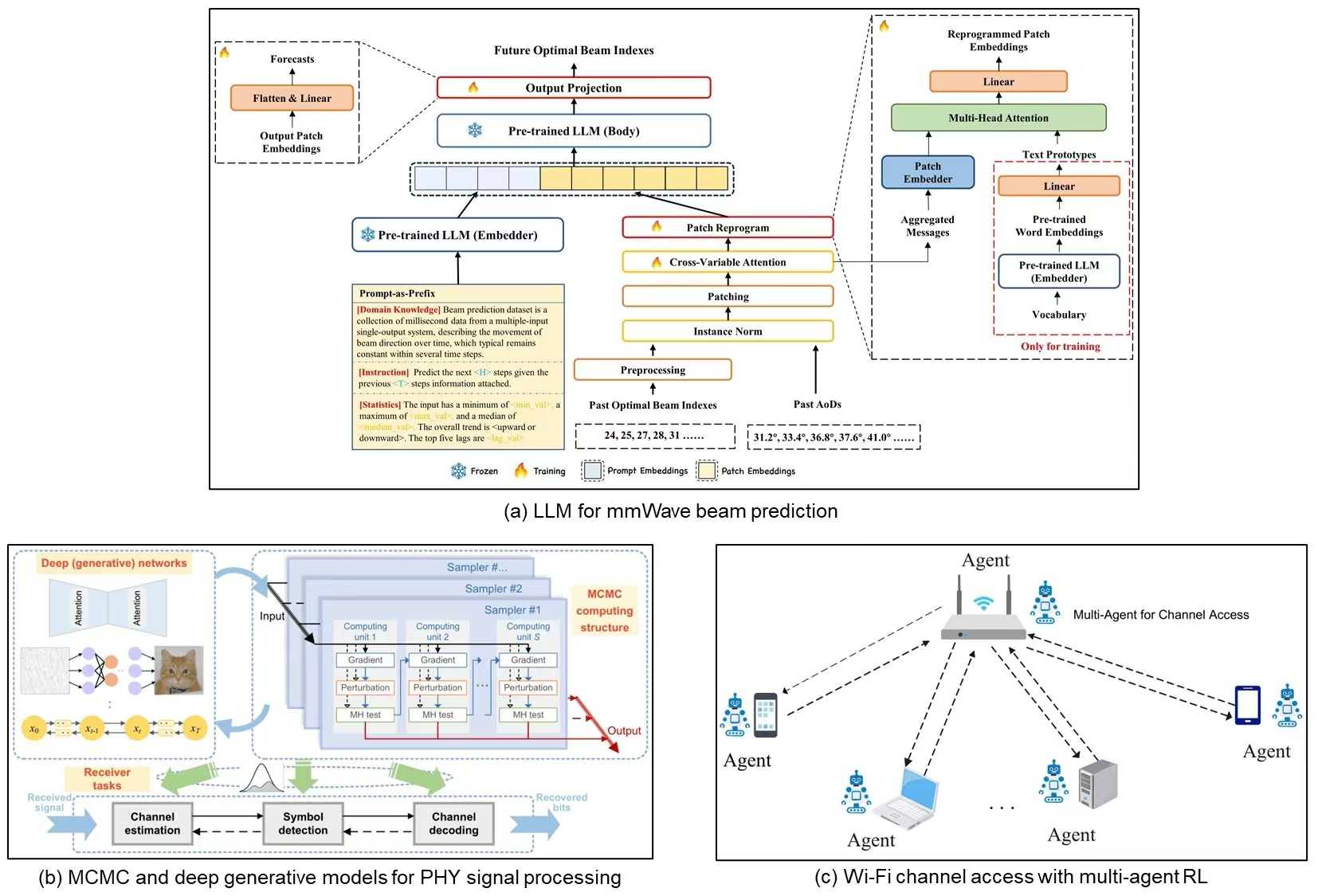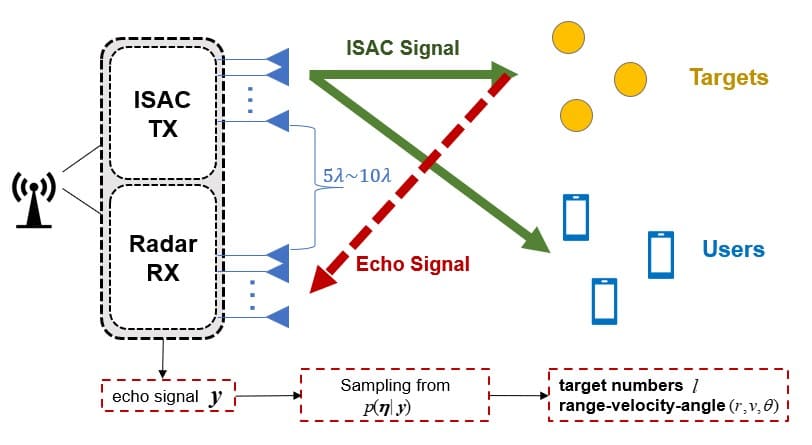Le Liang
We do research in the intersection of wireless communications and machine learning, aiming to develop intelligent wireless systems through studying fundamental theory, inventing new algorithms, and building prototypes. Currently, our research is organized around the following three themes.
Machine learning in communications and networking
The integration of AI and communication is expected to be a defining feature of the next generation wireless network. To fulfill this goal, we explore the use of various tools from the machine learning field to address challenges in the communications domain. In particular, we investigate approximate Bayesian inference and Markov chain Monte Carlo (MCMC) for communication signal processing in the physical layer. We study reinforcement learning (RL) and graph neural networks (GNN) for wireless resource allocation and explore multi-agent reinforcement learning to characterize complex interactions in wireless systems. We also examine large language models (LLM) in the wireless domain.

Semantic communication
Widely seen as a paradigm shift, semantic communication promises to bring disruptive changes to the communication field, especially when empowered by deep learning. We study the fundamentals of semantic communication, ranging from semantic coding and modulation to semantic resource allocation, and also explore its application in various domains to improve communication efficiency. In particular, we examine the use of semantic communication to enable efficient collaborative perception in autonomous driving. Through sharing sensory data (e.g., LiDAR and camera) among neighboring vehicles or roadside units, this will overcome the limitation of standalone perception and dramatically improve perception accuracy, yet without straining the communication bandwidth.



Wireless sensing
Integrated sensing and communication (ISAC), considered one of the key technologies for next-generation wireless networks, is expected to enhance resource utilization and create mutual benefits between sensing and communication. Our work focuses on the physical layer to explore ISAC's potential through signal processing techniques for both transmitter and receiver design. Specifically, we consider the use of OFDM signals for ISAC. On the transmitter side, we investigate joint beamforming design and beam tracking under millimeter wave (mmWave) systems to enable simultaneous target positioning and communication. On the receiver side, we adopt Markov Chain Monte Carlo (MCMC) methods to extract target information from received signals. Additionally, we are exploring the integration of large language models (LLM) with ISAC technology.

